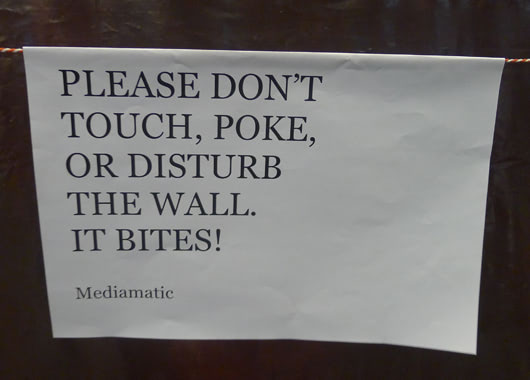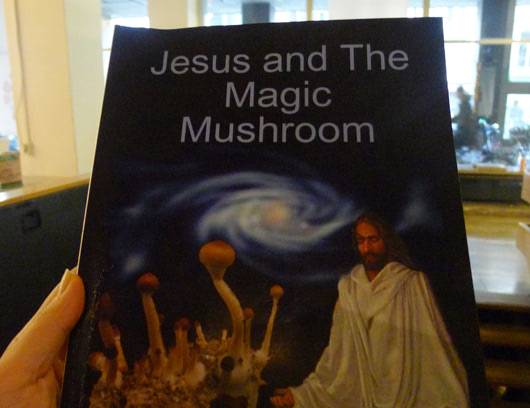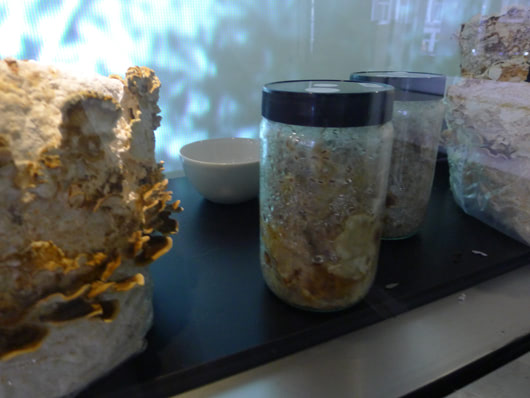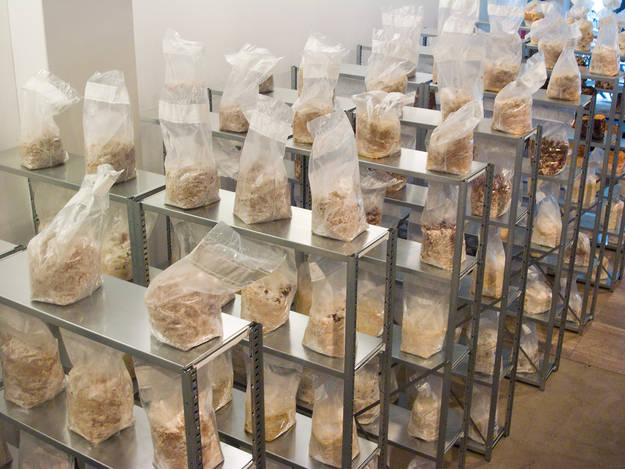Mediamatic is hosting a pop-up urban mushroom farm in the middle of Amsterdam. Rows and rows of shiitake, oyster, and the elusive almond-flavored Agaricus subrufescens are sprouting on metal shelves. With its experimental vibe, Paddestoelen Paradijs (Mushroom Paradise) proves that mushrooms might just be our best friends in the age of resource scarcity. They grow off dead, decaying, and often discarded organic matter, are low emission, and their roots can produce a material that's stronger than wood, as light as packing foam, and completely biodegradable.
Click through to see a living wall, the Christian mushroom cult, and Philosopher's Stones.
French artist Michel Blazy slathered a wall with a 'cement' of tomato paste and powdered potato flakes. After a few weeks of benign cultivation, the red wall is beginning to show signs of green, fluffy life. Soon the entire space will be covered with the kind of mold that normally makes us go "ew," not "interesting."

Humans and fungi have a long shared history, and not just because mushrooms taste really great in cream sauce. Some have theorized, with varying degrees of believability, that Christianity began as a psychedelic mushroom cult. Richard Doyle, previously featured on Next Nature, is granddaddy of this field for his belief that psychotropic substances spurred the evolution of the human mind.

Of course, no exhibit on mushrooms would be complete without some live, psychedelic versions. Here, Sclerotia tampanensis is growing next to some harmless but inedible turkeytail mushrooms. The Mediamatic staff is quick to emphasize that while mushrooms are certainly interesting as recreational substances, they're far more useful as the food, medicines, and building materials of the future.

Paddestoelen Paradijs runs through November 27.

Share your thoughts and join the technology debate!
Be the first to comment